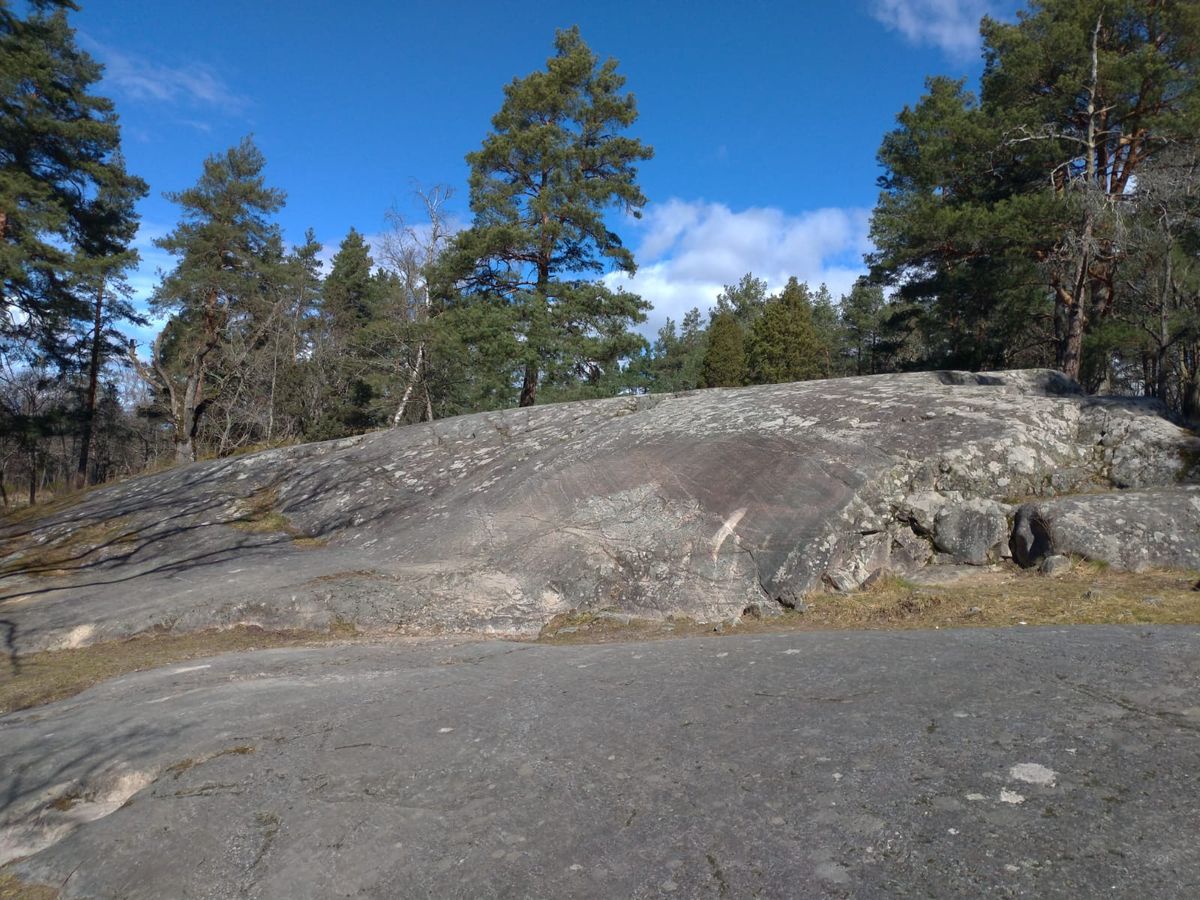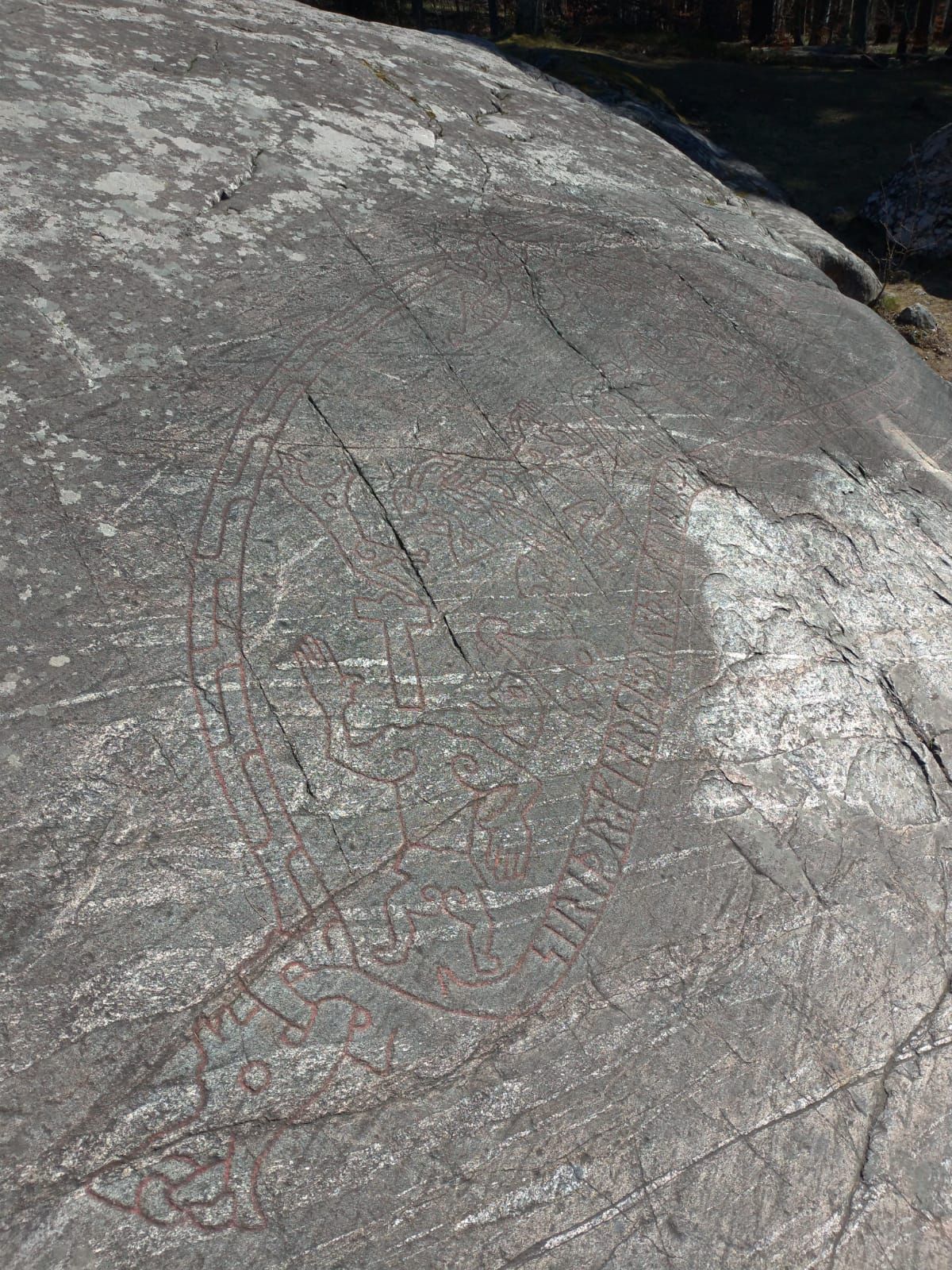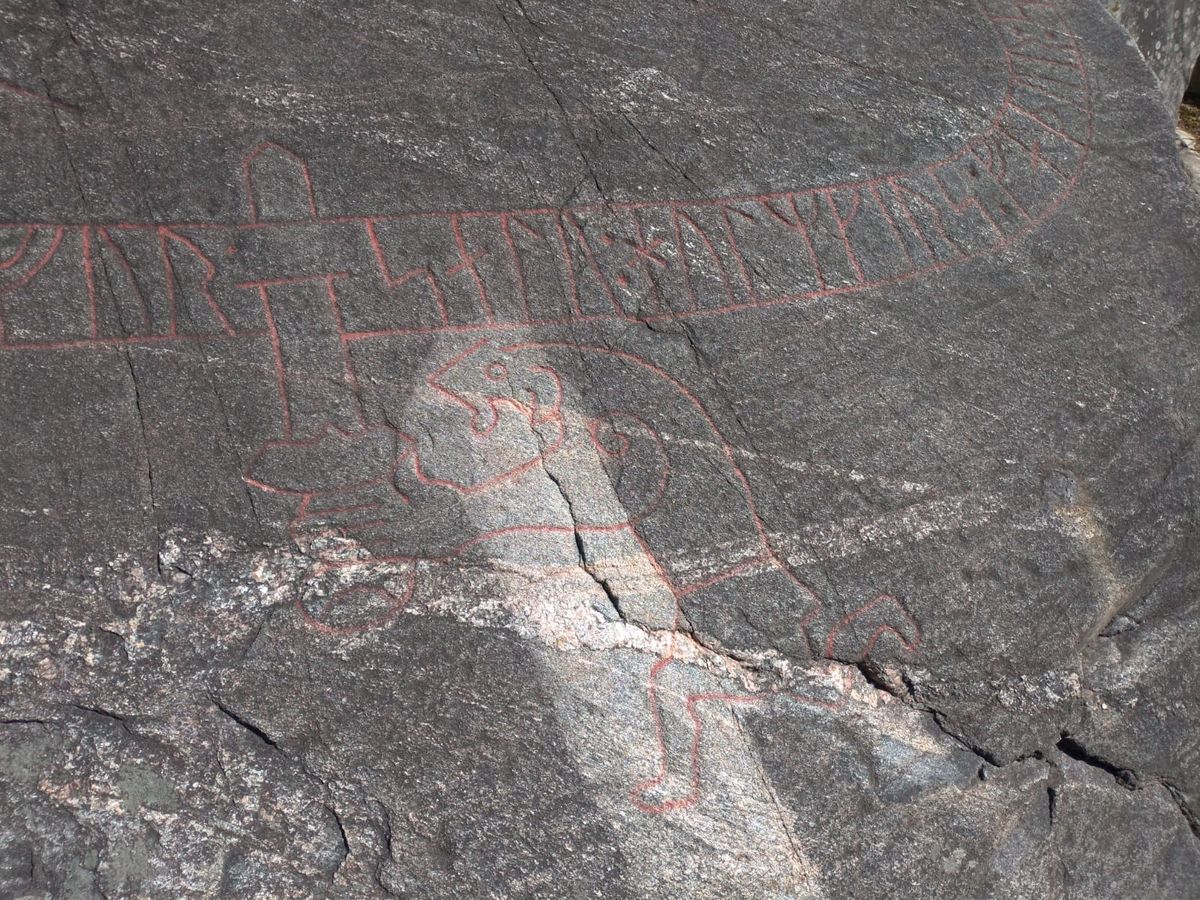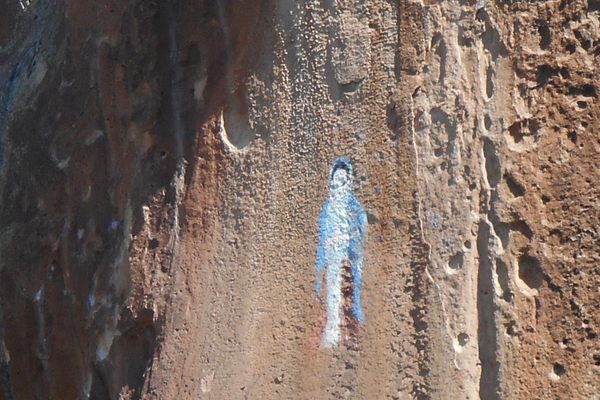About
The legend of Sigurd is a core component of both Norse and Germanic mythology (with the figure known as Siegfried in the latter), and is included in texts from the Poetic Edda to the Niebelunglied to Beowulf. Elements of the story has been incorporated, in whole or in part, into modern epics such as Wagner's Der Ring des Nibelungen and Tolkien's The Lord of the Rings.
Dating from the Viking Age, the Sigurd Stones are a group of runestones in eastern Sweden that provide the earliest Norse depictions of the legend of Sigurd the dragon slayer.
The Sigurdsristningen (which translates to Sigurd Carving but is commonly called the Ramsund Carving) is unique among the Sigurd Stones in that it is the only runic carving in the group etched into a rocky outcrop, rather than a standing stone. Moreover, it was apparently commissioned to help a loved one's soul reach Christian heaven.
Carved sometime around 1030 CE, the Sigurdsristningen provides a pictorial account of the heroic feats of Sigurd the dragon slayer. As a displaced youth, Sigurd was fostered by a smith name Regin. Regin had a score to settle with his brother Fafnir, who murdered their father Hreidmar and stole the gold paid to their family as a settlement after the trickster god Loki killed their brother Ótr. The main hurdle for Regin was that Fafnir had subsequently turned into a dragon, thanks to a curse attached to a ring in the treasure horde.
The good and impressionable Sigurd was enlisted to the cause, and armed with a magic sword forged by Regin. He killed Fafnir, cut out his heart, and, in the course roasting it, licked a bit of dragon blood from his fingers, which gave him the ability to speak with birds. Some nearby birds told him that Regin, also corrupted by the ring, was planning to betray and kill Sigurd, so Sigurd instead killed Regin and made off with the loot—carried on the back of a steed descended from Odin's own horse—to engage in further adventures of similar grimness and complexity.
This is the tale that the Sigurdsristningen tells in visual vignettes, showing Sigurd slaying Fafnir, tasting the dragon's blood, talking to birds, killing Regin, and his horse laden with treasure, while Ótr hovers over the proceedings. However, the runic inscription in Fafnir's body describes the carving as a "bridge" made by a woman named Alríkr for "the soul of Holmgeirr." This is significant because, as Scandinavia became Christianized, Fafnir became interchangeable with Satan, and bridge-building projects were funded by the Church to gain local support as well as to represent the bridge they offered to the afterlife, which fit neatly in a culture accustomed to reaching the afterlife by boat.
Related Tags
Know Before You Go
Bus number 9 from Fristadstorget To Sundbyholm. Get off at the castle and follow the signs to "Sigurdsristningen".If going by car, take "Mälarvägen" towards Sunbyholms Castle, turn right just before you enter the dense forest. There is a parking lot on the other side of the road from the carving.
Community Contributors
Added By
Published
November 4, 2016










































